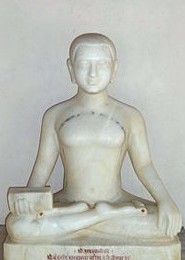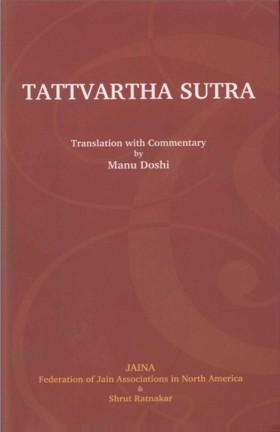04.13 Jyotishkah Sooryāshchandramaso Grahnaksha-traprakirnatārakāshcha
| Audio: | |
| Sanskrit: | ज्योतिष्काः सूर्याश्चन्द्रमसो ग्रहनक्षत्रप्रकीर्णतारकाश्च । |
| Hindi: | सूर्य, चन्द्र तथा ग्रह, नक्षत्र और प्रकीर्ण तारा - ये (पांच) ज्योतिष्क-निकाय है। |
04.14 Merupradakshinā Nityagatayo Nrloke
| Audio: | |
| Sanskrit: | मेरुप्रदिक्षिणा नित्यगतयो नृलोके । |
| Hindi: | वे मनुष्य लोक में मेरु के चारों ओर प्रदक्षिणा करते है तथा नित्य गतिशील है। |
04.15 Tatkrtah Kaivibhāgah
| Audio: | |
| Sanskrit: | तत्कृतः कालविभागः । |
| Hindi: | काल का विभाग उनके (चरज्योतिषकों) द्वारा किया हुआ है। |
04.16 Bahiravasthitāh
| Audio: | |
| Sanskrit: | बहिरवस्थिताः । |
| Hindi: | ज्योतिष्क मनुष्य लोक के बाहर स्थिर होते है। |
04.13-16
English: Suns, moons, planets, constellations and stars are the five categories of Jyotishka beings. They continue to move around the mountain Meru above the human habitation. The concept of time depends upon their movement. Those beyond the human habitation are static. These sutras deal with the third group, which consists of solar, lunar and other luminous bodies. They constitute what is termed as Jyotishchakra (stellar circle). The stars, suns, moons, constellations and planets are believed to be moving around the mountain Meru above the surface of Jamboodweep. The stars are supposed to move at an altitude of 790 Yojans, suns at 800, moons at 880, constellations at 884 and planets at 888 to 900 Yojans. The stars are thus supposed to be closest to the surface and the planets the furthest. Moreover, the suns are believed to be closer than the moons.
 Acharya Umaswati
Acharya Umaswati
